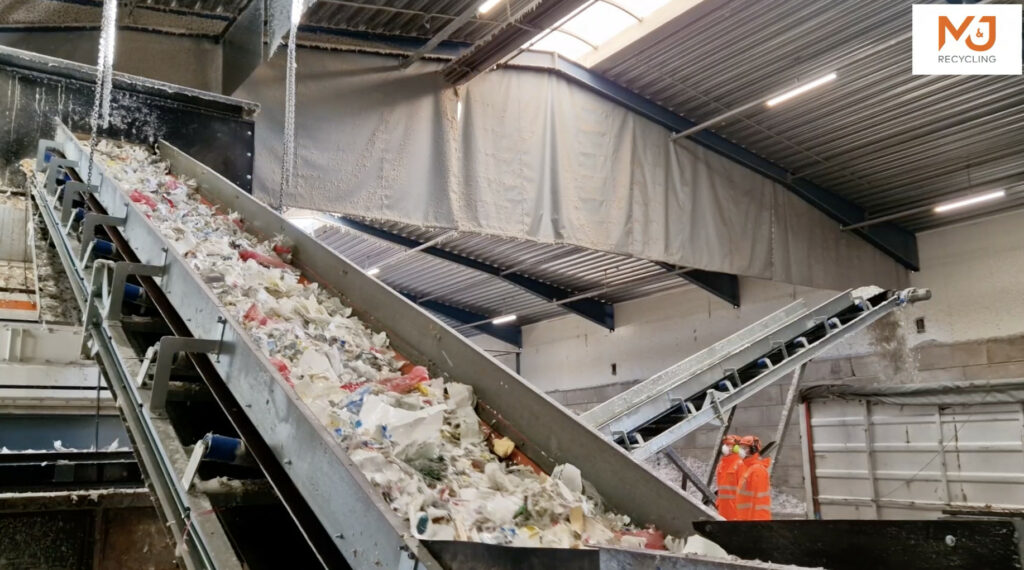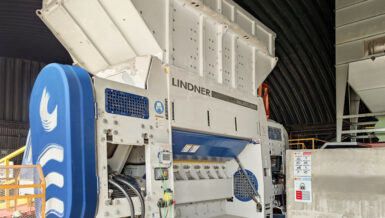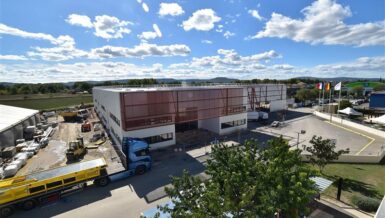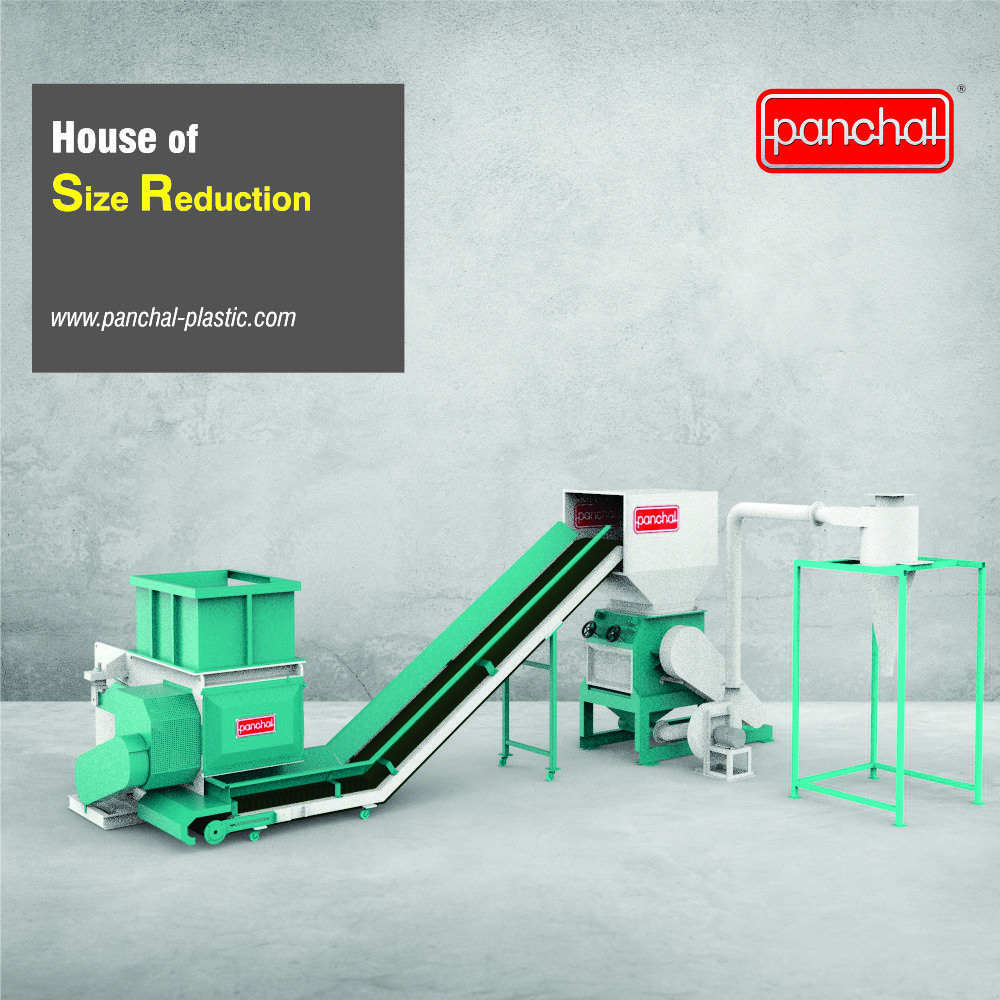Some of these materials are turned into refuse-derived fuel (RDF) and solid recovered fuel (SRF). After winning a contract to supply Aalborg Portland in 2019, EHJ Energy needed a larger set-up to replace the single-shafted shredder they had at the time. So, they decided to research their options:
“Our challenge was to find shredders that could reduce the materials to small enough fractions and do so at high capacity. In our research, M&J Recycling shone through. We chose an M&J 4000S pre-shredder and an M&J F210 fine-shredder, and it was a great success,” says Nils Tougaard, Operations Manager.
Most of the materials EHJ Energi uses to produce alternative fuels are leftover materials from the production of diapers and sanitary products. Because they are made up of a compound of plastic, foil, and felt, they cannot be recycled. Instead, the many rolls and piles of materials are first pre-shredded by the M&J 4000S, and then fine-shredded by the M&J F210, allowing them to be used as a substitution for coal and oil.
Growth led to a world premiere in Randers
EHJ Energy continued to grow significantly, and with an ever-increasing amount of materials coming in, the team found themselves needing an even larger fine-shredder. So, they started talking to M&J Recycling, which was in the process of developing a new, high-capacity electrical fine-shredder, the M&J F320 E-drive. It offered the same power and capacity as its hydraulic counterpart, but used less energy to power it, making it a great option for EHJ Energy.
In addition to in-house tests, M&J needed to run tests on a customer’s site to verify the shredder’s capacity and grain size. The team at EHJ Energy agreed to take part in the tests, so the electric fine-shredder was moved to Randers, where it quickly proved its worth:
”The difference is huge. We now produce about 100 tonnes of RDF pr. day, and we’re experiencing 25-30% energy savings, compared to running a hydraulic shredder. That really matters when you’re running every single day. The electrical shredder was implemented when the energy prices were at their highest, during the energy crisis, which just made the energy savings even more important”, says Nils.
In addition to lower energy consumption, switching to the electrical shredder has also given EHJ Energy a number of other benefits – a more steady operation being one of them:
“It seems to run more smoothly than the hydraulic shredder. The electric drive keeps the RPM more constant, giving the sense of a better flow. There’s no doubt that it is more powerful and has better torque”, Nils adds.
A better match for challenging materials
The stretchy nature of the compound material processed at EHJ Energi makes it challenging, as it can sometimes work itself into a chewing gum-like substance. When that happened with the hydraulic shredder, EHJ Energy’s team would need to turn the shredder off, open it up, empty it manually, and dig out the materials, before resuming operations.
“With the electrical shredder, we just reverse a bit using the panel and then resume normal operations. It really makes a difference. It has improved the working environment, as it means fewer frustrations and fewer manual tasks. We save about half an hour on unnecessary stops every single day, so it absolutely matters”, Nils mentions and continues:
“A simple thing that matters a lot in a busy workday is that we no longer have a hydraulic drive’s oil resistance, so when we do maintenance and replace the shredder’s knives, the shaft is a lot easier to turn manually. With the previous shredder, we could only do this in the morning, when it was cold, as there would be too much resistance at night. It’s a small thing, but it matters.
Having switched to an electrical drive also has the added benefit of not having to counter the hydraulic power unit’s heat generation to keep the hydraulic oil cold. And last, but not least, avoiding the risk of jammed hydraulics:
“With a hydraulic drive, you have maintenance of oil, filters, etc. and there is always a risk of the hydraulics getting stuck. We only experienced that a few times and it never caused big problems, but having switched to an electrical drive means that’s something I never have to worry about again. So, I personally feel more secure having the E-drive. There’s less concern for me, and if something is wrong, I can just open the screen and take a look. That’s a giant advantage, I’d say.”
Proud advocates of electric drives
Being the first to adopt the electric fine-shredder – and enjoying the many ways the M&J F320 has made a difference to EHJ Energy’s operations – the team is keen to share their experience:
“It’s a really good story. It really is, and I happily talk to others about our shredder – even to people outside our industry. When I talk to other machine engineers, and they ask what we use, I tell them about our shredder with pride”, says Nils and concludes:
“We are very proud of our electric fine-shredder, and we’re very excited about getting an electric pre-shredder too. We expect a lot from that, and we’re looking forward to operating a fully electric waste treatment line.”

























